Nevill Holt, Leicestershire: 'After 700 years of ups and downs, finally entering its prime'
The reimagined gardens at Nevill Holt, Leicestershire, have stepped into the limelight to offer a powerful overture to the summer opera festival, explains Kendra Wilson. Photographs by Clive Nichols.
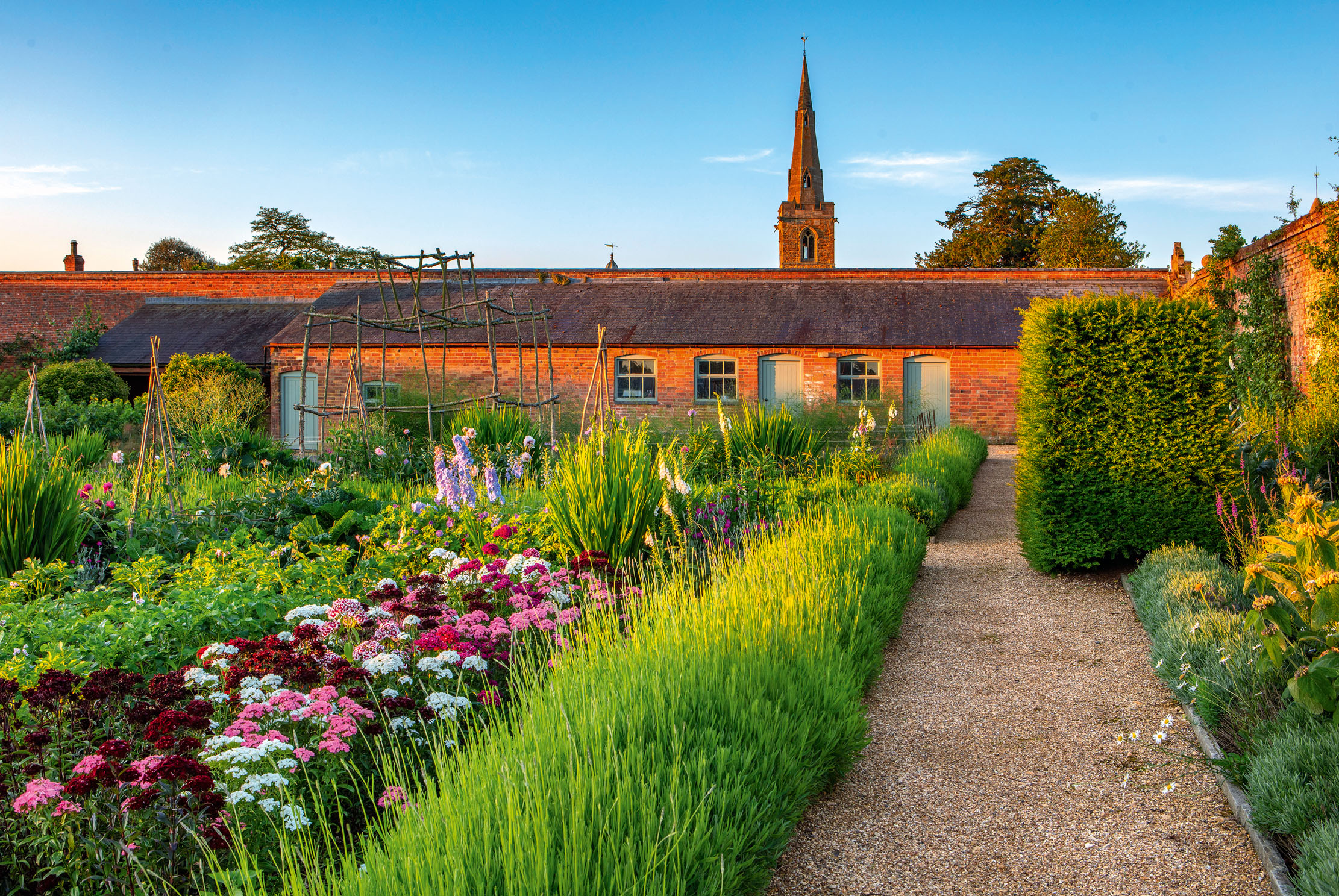

Nevill Holt feels like a place that is, after 700 years of ups and downs, finally entering its prime. Closeted on a hill in a quiet part of Leicestershire, the ironstone hall at Holt was home for four centuries to the recusant Nevill family, who added their name and many extensions. By 1877, when the shipping heir Sir Bache Cunard took possession of the house, its centuries of layering made for a look that was much in vogue, ready for the neo-Gothic detailing Cunard added with enthusiasm.
A golden age almost began with the arrival of opera-loving Lady Cunard (later known as Emerald), a gregarious Californian heiress. If only Sir Bache himself had been musical. When he was away fishing, his wife’s friends would take over the house, singing Wagnerian arias out of bedroom windows in the middle of the night. Lady Cunard’s departure for London (together with her daughter, Nancy, a style icon and agitator) was Nevill Holt’s loss.
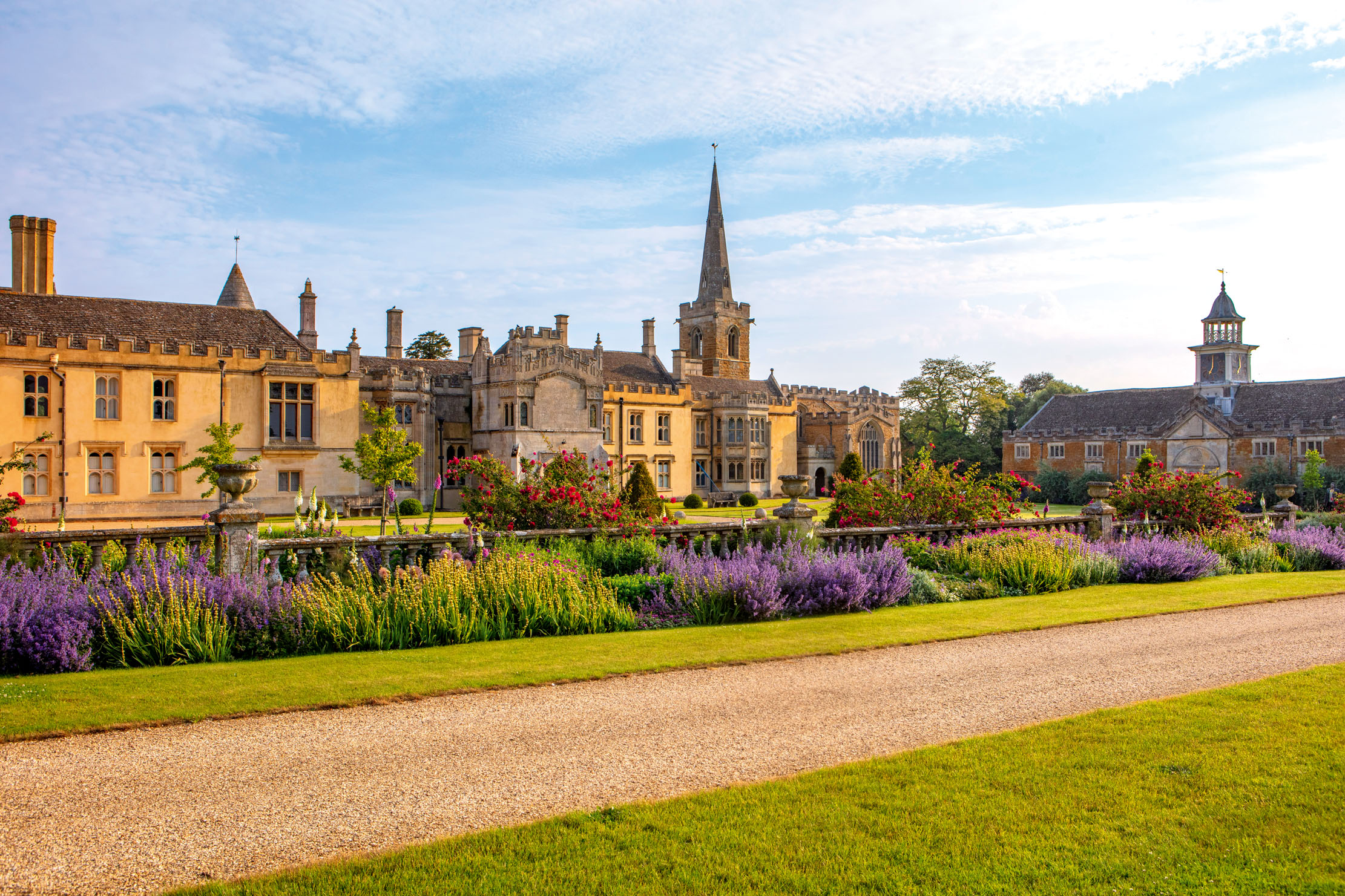
As Lady Cunard was establishing herself as an influential hostess and great supporter of the opera at Covent Garden (‘There was no limit to the number of boxes she could fill,’ noted Osbert Sitwell), her former home went into hibernation as a prep school. When it closed and, in 1999, was put up for sale as one dwelling, it was a threadbare proposition. But David Ross — businessman and now chair of the Royal Opera House — saw the potential. He resolved to turn his home into a setting for music, partly as a pragmatic way of opening the gates to like-minded people, as well as former pupils. Nevill Holt Opera eventually came into being and the garden, teased back to life by designer Rupert Golby, has a starring role.
‘I wanted to give the garden a focus around the June and July festival period. A culmination,’ explains Mr Ross, ‘of extraordinary beauty.’ The garden’s new identity (mainly closed, except when it plays host to hundreds of guests) made for an unusual brief. ‘Being quite open and plain, there was still very much the feeling of a school,’ says Mr Golby. ‘We’ve tried to return it to a garden that feels private, bearing in mind the big factor of the opera.’
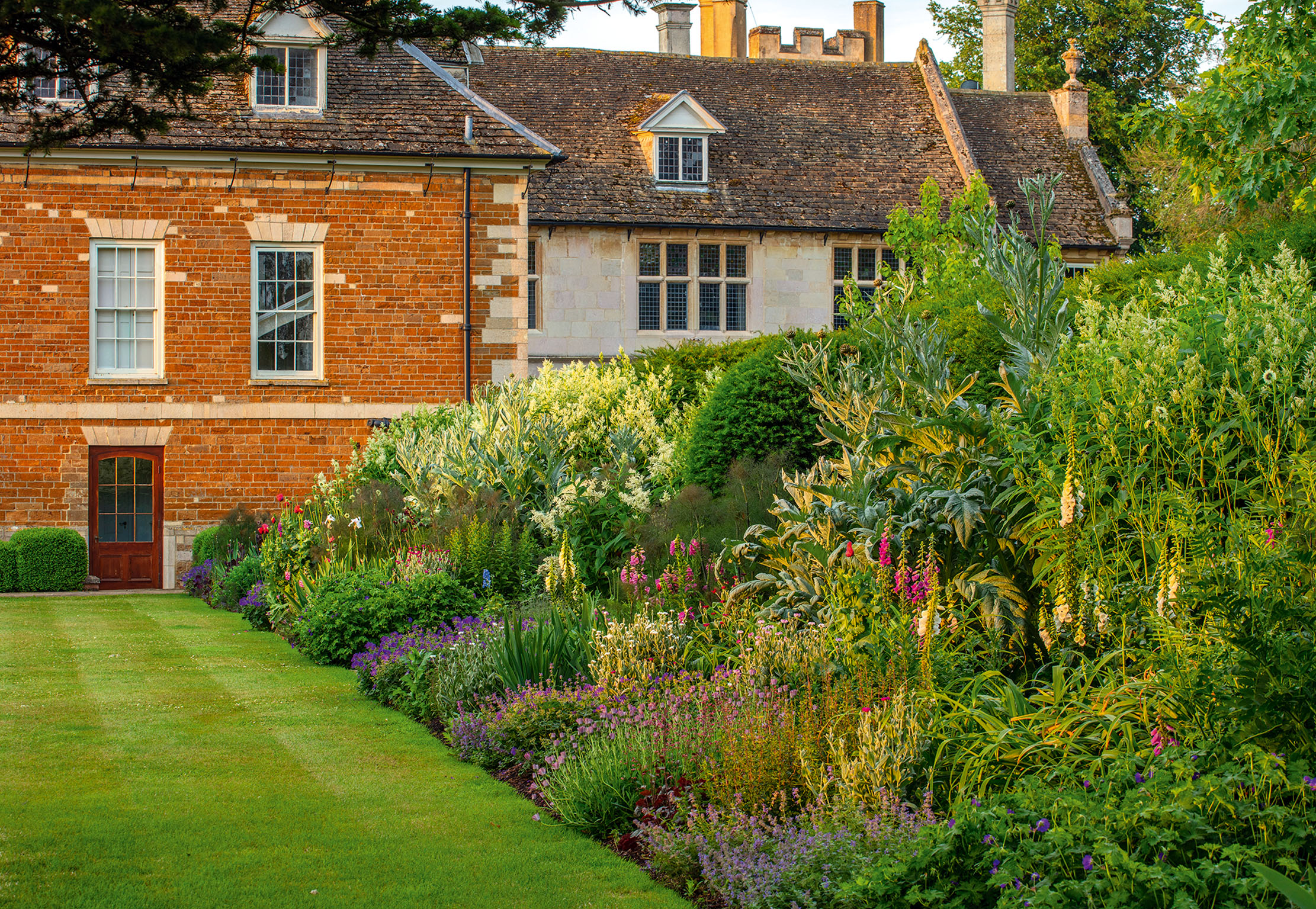
He prefers the idea that he is reinterpreting, rather than designing. The grounds were largely unchanged since at least the 17th century, with lawns, a viewing mount and smaller walled compartments, more recently decorated with stone fretwork along the top. ‘The Cunards would have put in these decorative doorways, in the manner of Peto going around dressing everything up,’ says Mr Golby.
A Cunard-era pavilion with Doric columns sits in one of these walled gardens, overlooking roses, a sundial and the backside of a naked man, cast in bronze by Antony Gormley. The figure is standing ankle deep in a pond on Mr Golby’s suggestion, almost as a joke. ‘It’s a big piece to accommodate anywhere. This was by far the most prominent place to put it and the most difficult.’ The sculpture is part of an exercise in scale and is now dwarfed by unusually large echiums for this part of England, as well as 19 rounded holm oaks, which were moved from another area. ‘It is moods we are creating,’ notes Mr Golby. ‘The planting fills up into an intimate garden, making a nice contrast. Then you have the big, open lawns.’
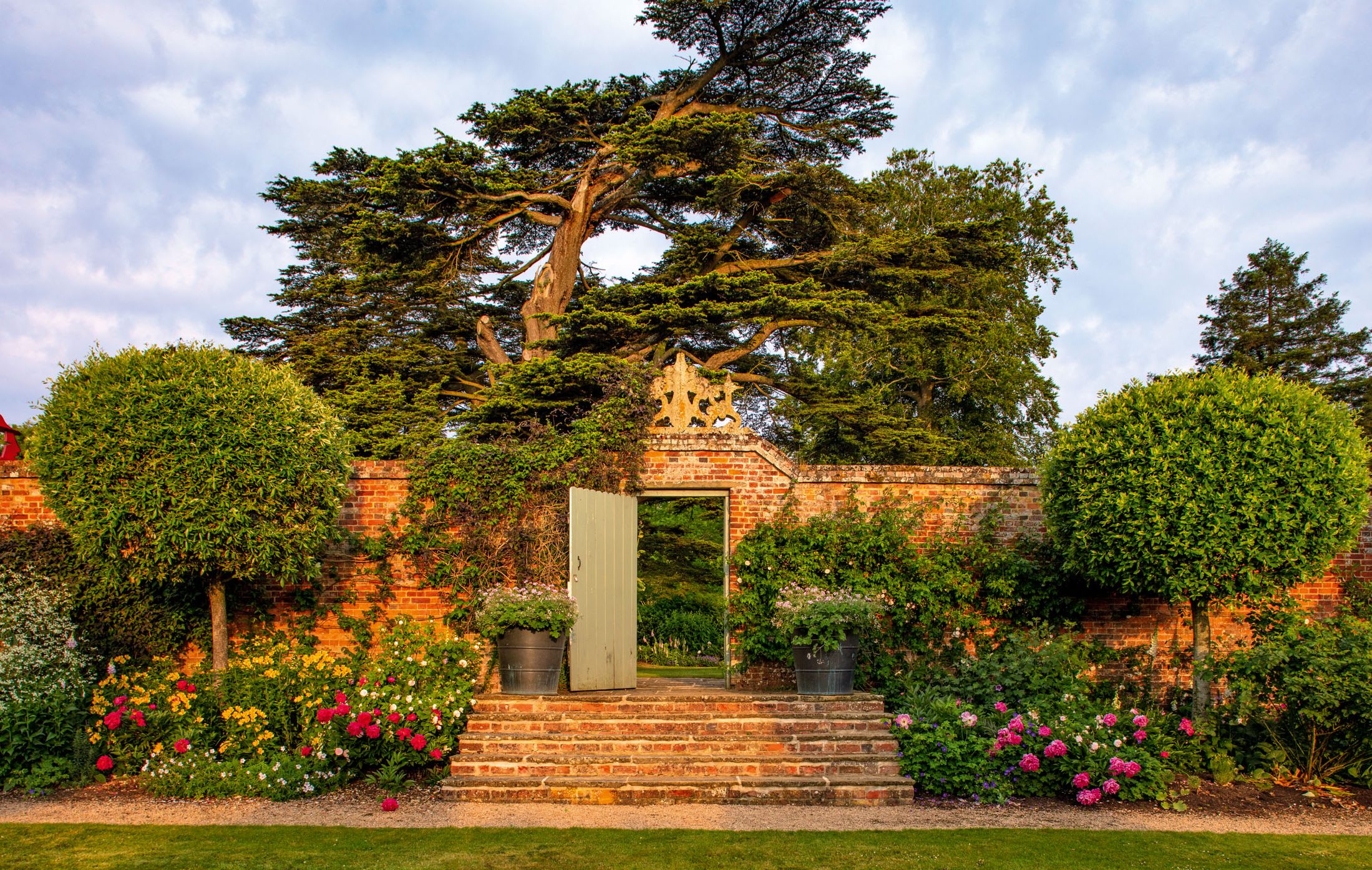
One of these lawns is dominated by a skyscraper of an Allen Jones sculpture in fire-engine red, just over the hedge from the Cedar Lawn, a favourite spot with opera picnickers. Meagre borders were deepened, extended and replanted against the protecting brick walls that are vital up here, although the prevailing wind is filtered by tree-lined lanes to the west. Each bed has repeats of structural plants, including Paulownia tomentosa, stooled to keep it as a smallish dome with large leaves; silvery cardoons; Cynara cardunculus; and mounds of Persicaria polymorpha that begin to flower during the midsummer festival. Self-seeders are less controlled, with opium poppies, Lychnis coronaria and wild foxgloves threading their way through.
Sign up for the Country Life Newsletter
Exquisite houses, the beauty of Nature, and how to get the most from your life, straight to your inbox.
Sculpture is as much part of the landscaper’s brief as the events. Purchasing begins with Mr Ross sending a photograph of a potential piece to Mr Golby and head gardener Andy Bretherick, to see if it can be placed. Some things are non-negotiable, such as Rachel Whiteread’s concrete garden shed. This grabs the attention of concertgoers as they walk to the new theatre, elegantly shoehorned into the 17th-century stable block by Witherford Watson Mann Architects. ‘The sculptures are not the point of the garden, they are incidental,’ insists Mr Golby, whose main concern is with creating balance. ‘Scale is the word. Holding the scale. Running with the scale of the place and its situation. That dictates what you should have here.’
In holding the scale of the south façade, he and Mr Bretherick used blue string to map out the front parterre. Because none of the geometry lined up between the 16th-century west wing and the stable-block theatre to the east, Mr Golby decided to view the arrangement as a kind of quadrangle. Yew pyramids, underplanted with lavender, are interspersed with mulberry and medlar trees. ‘We needed something big and simple there, to draw people through,’ says Mr Golby. ‘It makes a nice promenade, between picnic and opera.’
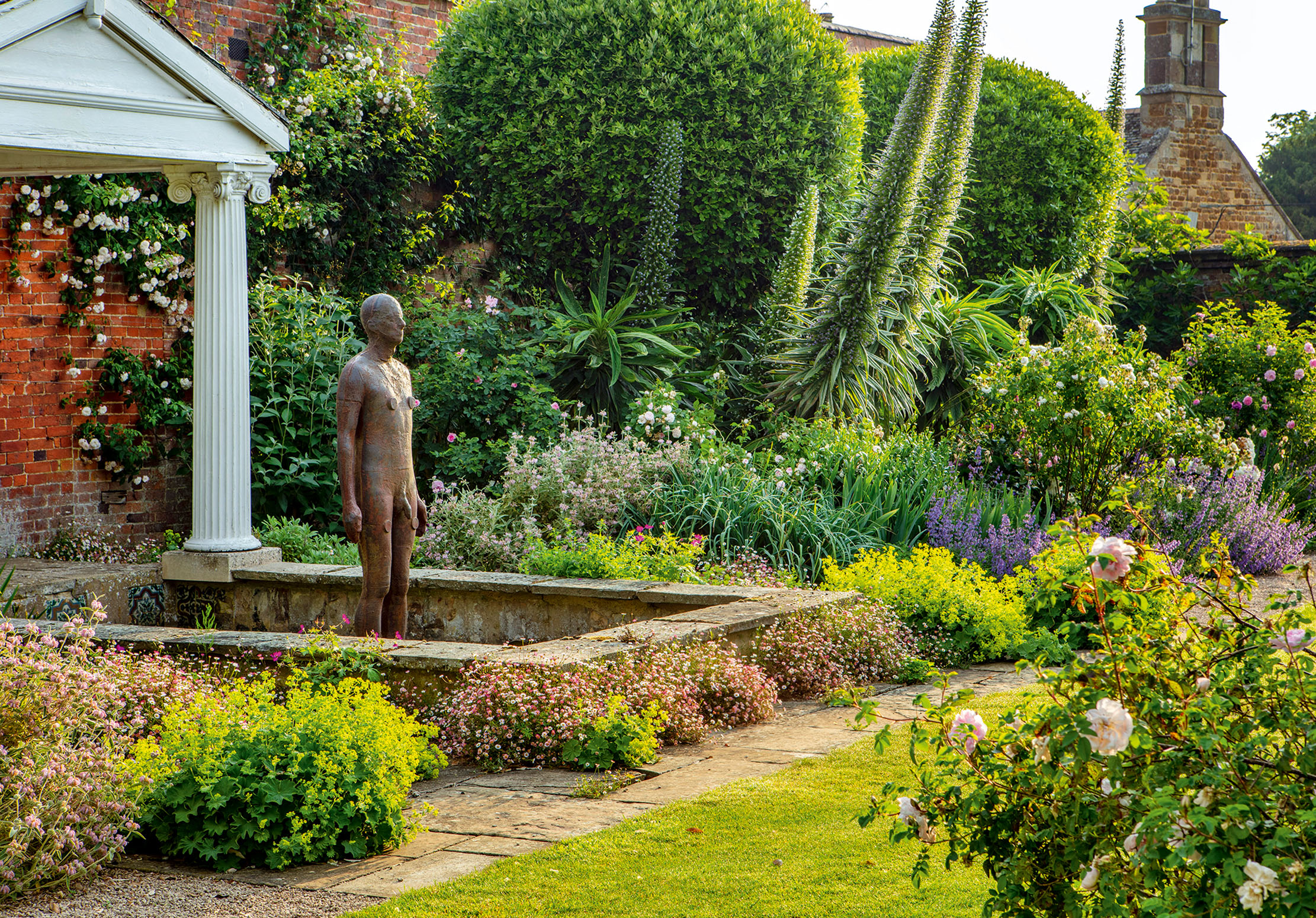
A Victorian balustrade is a semi-transparent fourth side by the drive, before the lawn drops down towards the Welland Valley. It is gloriously theatrical, with arches of Rosa ‘Cerise Bouquet’ planted between unfilled urns. The beds on either side share an uncomplicated selection of perennials, with repeats of colour that can be seen from a distance, the mauve, pale yellow and silver mainly coming from Sisyrinchium striatum, Nepeta racemosa ‘Walker’s Low’ and Artemisia ludoviciana. ‘The repetition is dictated by the balustrade,’ notes Mr Golby. ‘The ‘Cerise Bouquet’ rose has a lovely free form, giving structure and shape, a wonderful flower and terrific colour.’ It provides, exactly as Mr Ross had wished, that culmination of extraordinary beauty.
The Nevill Holt Summer Opera Festival, Leicestershire, intends to run outdoors from August 4–25 — www.nevillholtopera.co.uk
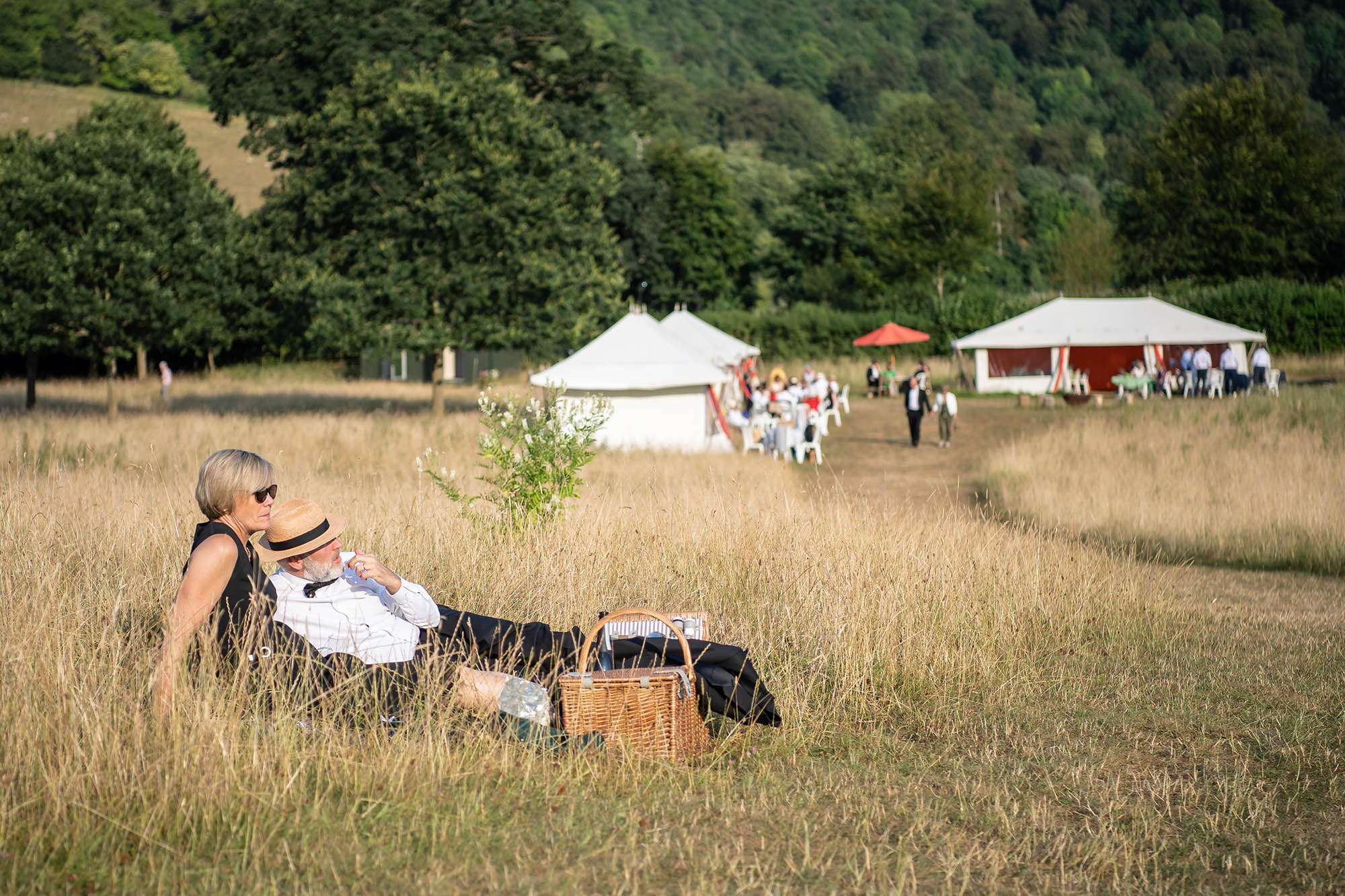
Glyndebourne, Garsington and The Grange among the summer outdoor operas going ahead in Britain this year
Glyndebourne 2021 and several of the other open-air opera events that are such a feature of the British summer are
Country Life is unlike any other magazine: the only glossy weekly on the newsstand and the only magazine that has been guest-edited by HRH The King not once, but twice. It is a celebration of modern rural life and all its diverse joys and pleasures — that was first published in Queen Victoria's Diamond Jubilee year. Our eclectic mixture of witty and informative content — from the most up-to-date property news and commentary and a coveted glimpse inside some of the UK's best houses and gardens, to gardening, the arts and interior design, written by experts in their field — still cannot be found in print or online, anywhere else.

